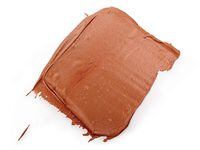Before Bondo came along in 1955, bodywork was a dangerous, delicate affair that required a torch, lead solder, and an ocean of experience. Polyester-based fillers arose out of a need. All the heat that went along with melting lead and tin-alloy solder was more apt to warp the ever-thinner sheet metal that manufacturers favored post World War II than fix the hole or crease at hand. Bondo and its rivals were miracles by comparison. They allowed anyone to accomplish repairs with a little patience and some sandpaper.
But even as Bondo slid into the lexicon along with Band-Aid, Kleenex, and Jell-O, fillers never stopped evolving. Today, there’s a variant for nearly every type of metal, plastic or composite repair, from galvanized steel to fiberglass.
Plastic or polyester fillers are still the most common, offering a work time of anywhere from four to nine minutes depending on ambient temperature, and are typically cured and ready to sand in 15 minutes. Modern glazing putty, another polyester-based filler, can be used to fill small pinholes and scratches left after finishing.
Metal fillers generally use aluminum to deliver more flexibility, such as on a sail panel or other thin, unsupported sheet metal, and resist cracking better than standard plastic options. Finally, fiberglass fillers deliver added structure. Short-strand variations can be used to fill small holes, while long-strand formulas can cover voids of up to 1 inch in diameter. A new breed of shapable silicone putties like Sugru fill a slightly different role, molding to the shape of the parts they fix and replace. Any parts store worth its salt can point you in the right direction, and companies like 3M and Eastwood offer excellent customer support. When in doubt, pick up the phone and ask which product is right for your project.
/cloudfront-us-east-1.images.arcpublishing.com/octane/5MSEFCQA5L52TLPPOIJ4OHWBKA.jpg)

/cloudfront-us-east-1.images.arcpublishing.com/octane/IN263JIBTBCD3O265IMSCW6OZM.jpg)
/cloudfront-us-east-1.images.arcpublishing.com/octane/SMAQ354X2JH7NJATXNSQY4NRS4.jpg)
/cloudfront-us-east-1.images.arcpublishing.com/octane/GGOH2AQRSVHY5C5JLNEVYLB5SU.jpg)
/cloudfront-us-east-1.images.arcpublishing.com/octane/TJJEHV3ATZFFXHUYZABHXKE2DI.jpg)
/cloudfront-us-east-1.images.arcpublishing.com/octane/WIC4RXQ36BAXNIW6U4UJ3XDLKI.jpg)
/cloudfront-us-east-1.images.arcpublishing.com/octane/B4PQZLY4LBHITGE5ZRRM2N5YNU.jpg)
/cloudfront-us-east-1.images.arcpublishing.com/octane/OBYS7KWZUJFCHD44YPTSVM5EF4.jpg)
/cloudfront-us-east-1.images.arcpublishing.com/octane/FY7ZXYBT4NH2NGYQIWQVITS4AM.jpg)
/cloudfront-us-east-1.images.arcpublishing.com/octane/JPET6WQUDZEYLNXVY5LRNDRPLA.jpg)
/cloudfront-us-east-1.images.arcpublishing.com/octane/EY6P2QIFQJCDTNOMR3JB7WJED4.jpg)
/cloudfront-us-east-1.images.arcpublishing.com/octane/V2U6JB7KXNCQRN4OW6HNJTVMZQ.jpg)
/cloudfront-us-east-1.images.arcpublishing.com/octane/AMS43BT5ABH77NY7XKLCSZCNM4.jpg)
/cloudfront-us-east-1.images.arcpublishing.com/octane/NTK2ASYKUBDW5MQDWQLVQYOELY.jpg)
/cloudfront-us-east-1.images.arcpublishing.com/octane/SX7R3KCIANGDBGF45O73F543TM.jpg)
/cloudfront-us-east-1.images.arcpublishing.com/octane/ZTW4V7RAPFG6RFWJRXR2IX5ZQ4.jpg)
/cloudfront-us-east-1.images.arcpublishing.com/octane/EPRSLPIUTBC5RPD7R263BPV2D4.jpg)
/cloudfront-us-east-1.images.arcpublishing.com/octane/EMJ4I2T4HVCRVJPZ3UJFVMRDHA.jpg)
/cloudfront-us-east-1.images.arcpublishing.com/octane/CBDAM3VMJNFDBLE7Y3FY7RD5BY.jpg)
/cloudfront-us-east-1.images.arcpublishing.com/octane/CCEB3TNMU5FH3OZ4FKJ7DA2LBA.jpg)
/cloudfront-us-east-1.images.arcpublishing.com/octane/VV6N3KUWEVFJJD7F7VX6ICOH7Q.jpg)
/cloudfront-us-east-1.images.arcpublishing.com/octane/R55SVEXZ5VA2LCWFWYR647ASX4.jpg)
/cloudfront-us-east-1.images.arcpublishing.com/octane/MYWIEFOQ6JCCNDR4OBF5PU5LVE.jpg)
/cloudfront-us-east-1.images.arcpublishing.com/octane/OOZ3C4GCUJGRNONDI6DHVM57GI.jpg)
/cloudfront-us-east-1.images.arcpublishing.com/octane/JEKB3CMWXZD6ZAVFEDKLOQ5FNY.jpg)